
Cetinje: The Heartbeat of Montenegro's History
Explore Cetinje, Montenegro's historic heart, where royal heritage, cultural treasures, and natural beauty converge in a captivating mountain setting.
Cetinje, nestled in the picturesque mountains of Montenegro, is a city that breathes history and culture. As the former royal capital, it boasts an array of historical treasures and architectural gems. Wander through its charming streets and you will be taken back in time, surrounded by grandiose buildings and monuments that tell the story of Montenegro's past. The city is home to several important museums and galleries. The National Museum of Montenegro, located in the grand Biljarda building, houses a vast collection of art and artifacts. Nearby, the Cetinje Monastery is a spiritual haven and a must-visit for its stunning frescoes and religious relics. Don't miss the Blue Palace, an exquisite example of 19th-century architecture, which serves as the residence of the Montenegrin president. Nature lovers will find plenty to explore in the surrounding area. The Lovćen National Park, just a short drive away, offers breathtaking views and hiking trails that lead to the summit of Mount Lovćen. Here, you can visit the mausoleum of Petar II Petrović-Njegoš, one of Montenegro's most revered figures, and enjoy panoramic vistas of the Adriatic coastline. Cetinje is a city that beautifully blends history, culture, and nature, making it a unique destination for travelers seeking an authentic Montenegrin experience.
Local tips in Cetinje
- Visit the National Museum of Montenegro early in the day to avoid crowds.
- Wear comfortable shoes for walking through the city's historic streets and parks.
- Try local delicacies at traditional Montenegrin restaurants for an authentic culinary experience.
- Bring a camera to capture the stunning views from Lovćen National Park.
- Check the opening hours of museums and monuments in advance as they may vary seasonally.
Cetinje: The Heartbeat of Montenegro's History
Cetinje, nestled in the picturesque mountains of Montenegro, is a city that breathes history and culture. As the former royal capital, it boasts an array of historical treasures and architectural gems. Wander through its charming streets and you will be taken back in time, surrounded by grandiose buildings and monuments that tell the story of Montenegro's past. The city is home to several important museums and galleries. The National Museum of Montenegro, located in the grand Biljarda building, houses a vast collection of art and artifacts. Nearby, the Cetinje Monastery is a spiritual haven and a must-visit for its stunning frescoes and religious relics. Don't miss the Blue Palace, an exquisite example of 19th-century architecture, which serves as the residence of the Montenegrin president. Nature lovers will find plenty to explore in the surrounding area. The Lovćen National Park, just a short drive away, offers breathtaking views and hiking trails that lead to the summit of Mount Lovćen. Here, you can visit the mausoleum of Petar II Petrović-Njegoš, one of Montenegro's most revered figures, and enjoy panoramic vistas of the Adriatic coastline. Cetinje is a city that beautifully blends history, culture, and nature, making it a unique destination for travelers seeking an authentic Montenegrin experience.
When is the best time to go to Cetinje?
Iconic landmarks you can’t miss
Cetinje Monastery
Explore the historic Cetinje Monastery, a cultural landmark in Montenegro, showcasing stunning architecture and rich religious heritage.
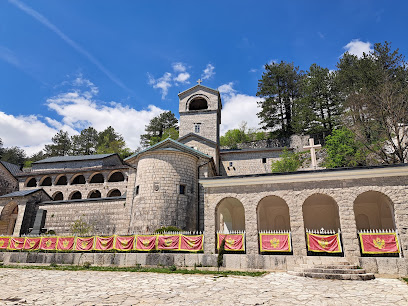
Lipa cave
Explore the stunning Lipa Cave in Montenegro, a natural wonder filled with breathtaking stalactites and stalagmites, perfect for nature lovers and adventurers.
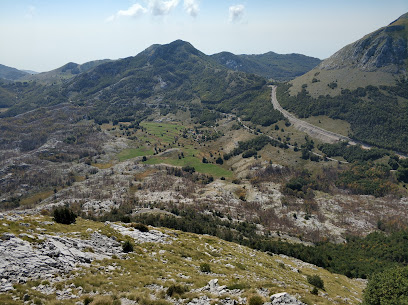
Kotor Serpentine
Explore the Kotor Serpentine, a stunning mountain road in Montenegro offering breathtaking views, rich history, and an unforgettable travel experience.
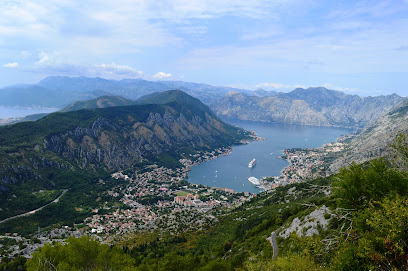
King Nicholas Museum
Discover the royal history and cultural treasures of Montenegro at the King Nicholas Museum in Cetinje, a captivating journey through time.
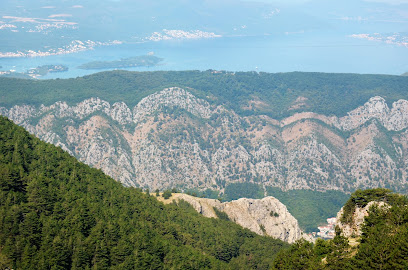
Billiard Palace
Explore the Billiard Palace, a unique museum in Cetinje, Montenegro, showcasing the rich history and artistry of billiards.

Ка' Дома
Discover the enchanting fusion of art restoration and delicious pizza at Ka' Doma in the historic town of Cetinje, Montenegro.
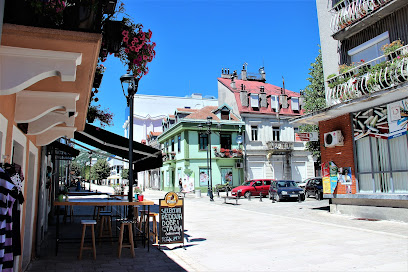
Castle Church
Explore the Castle Church in Cetinje, Montenegro, a stunning Orthodox church that reflects the rich cultural heritage and architectural beauty of the region.
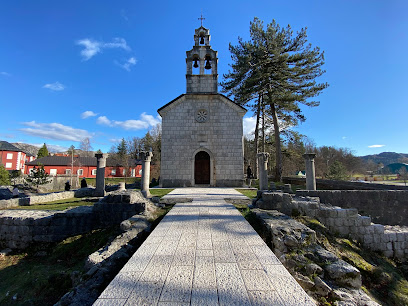
Vlaška Church
Discover the spiritual heart of Montenegro at Vlaška Church, a historical landmark steeped in rich culture and breathtaking architecture.
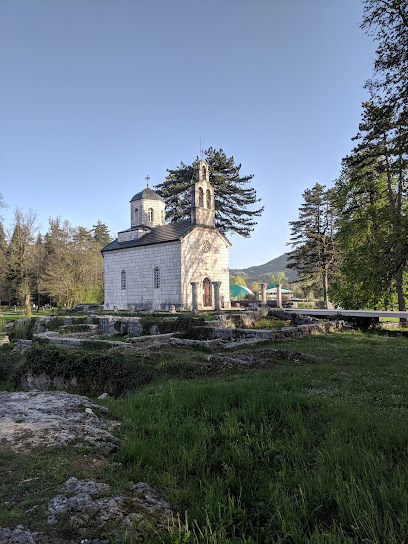
Eagle Stone
Discover breathtaking views of Cetinje from Eagle Stone, the perfect observation deck to immerse yourself in Montenegro's stunning landscapes.
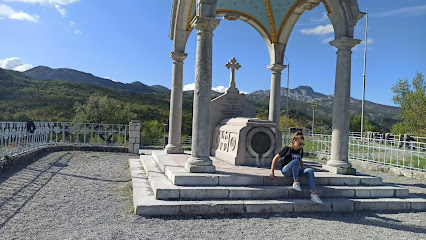
The Blue Palace
Explore The Blue Palace in Cetinje, the official residence of Montenegro's President, a captivating historical landmark steeped in rich heritage.
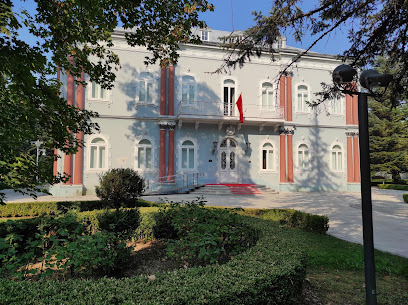
Djukanovic Palace
Discover the Djukanovic Palace in Cetinje, a historical landmark that offers a glimpse into Montenegro's rich cultural heritage and architectural beauty.

Monument to Ivan Crnojevic
Explore the Monument to Ivan Crnojevic, a symbol of Montenegrin heritage, nestled in the enchanting city of Cetinje, rich in history and culture.
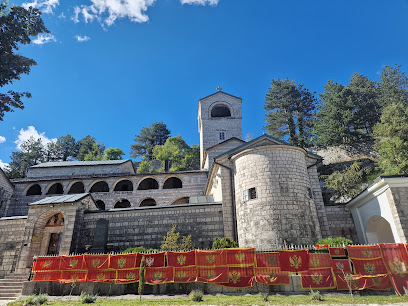
Place for pictures with Cetinje
Discover the picturesque beauty of Cetinje, Montenegro, a top destination for photography lovers with its stunning landscapes and rich cultural heritage.
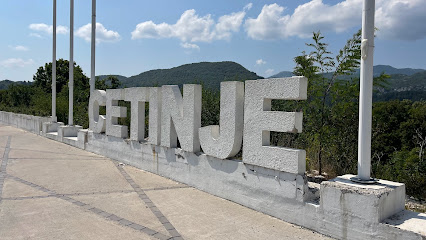
Bivše Grčko poslanstvo / Former greek embassy
Explore the Former Greek Embassy in Cetinje, a historical landmark showcasing the rich architectural and cultural heritage of Montenegro.
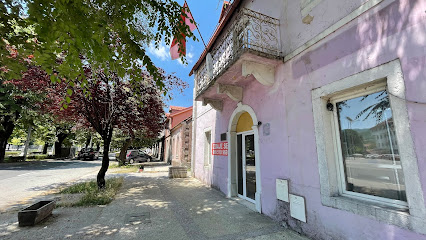
Aleksandar Leso
Experience the artistic spirit of Montenegro at the Aleksandar Leso sculpture in Cetinje, a beautiful tribute to cultural heritage amidst stunning landscapes.
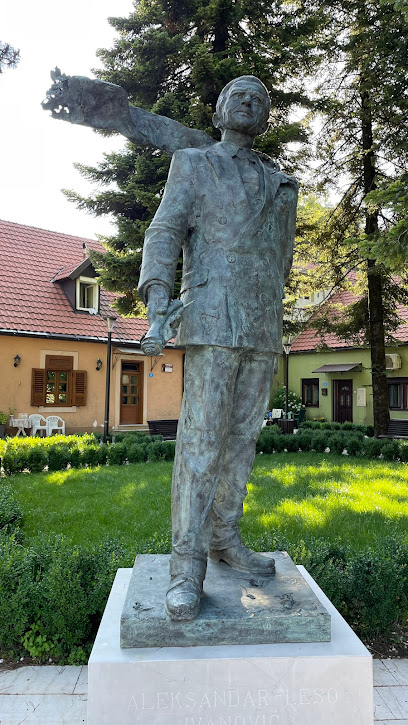
Unmissable attractions to see
Ostrog Orthodox Monastery
Discover spiritual tranquility and breathtaking views at Ostrog Orthodox Monastery, a must-visit pilgrimage site in Montenegro's stunning landscape.
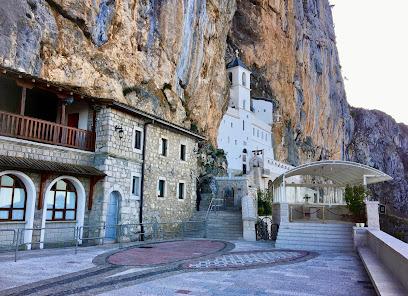
Porto Montenegro
Experience the luxury and charm of Porto Montenegro, a premier marina destination offering stunning views, upscale dining, and vibrant nightlife on the Adriatic coast.
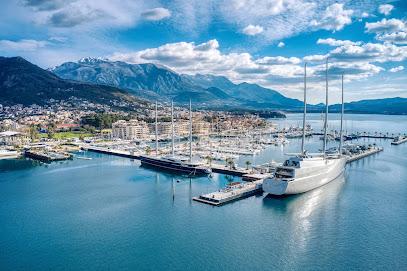
Fortress Old Bar
Discover the Fortress of Old Bar, a historical marvel offering breathtaking views and a rich tapestry of Montenegro's diverse cultural heritage.
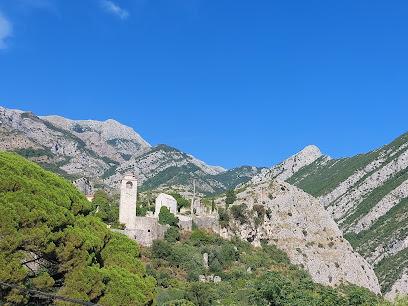
Lovćen National Park
Discover the breathtaking landscapes and rich cultural heritage of Lovćen National Park, a must-visit destination in Montenegro's stunning natural beauty.
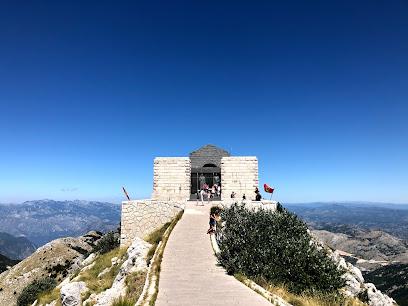
Kampana Tower
Discover the stunning views and rich history of Kampana Tower, a must-visit tourist attraction in Kotor, Montenegro.
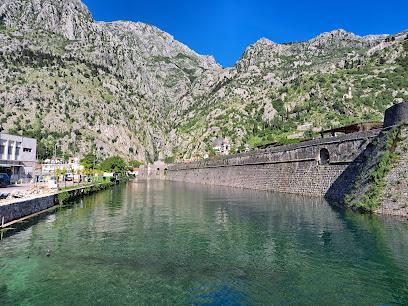
Jaz Beach
Experience the breathtaking beauty and vibrant atmosphere of Jaz Beach, a premier destination for relaxation and adventure on Montenegro's stunning coastline.
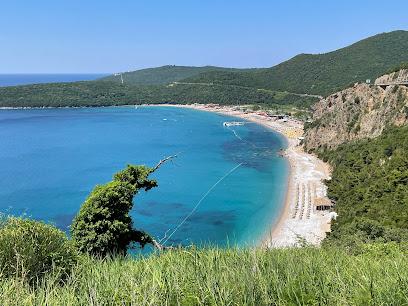
Ferry Kamenari
Experience the breathtaking views and serene journey of Ferry Kamenari, the gateway to Montenegro’s stunning coastal beauty.
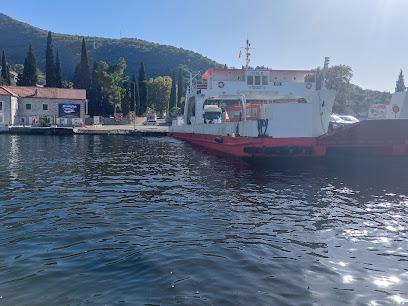
Žanjic Beach
Experience the tranquil beauty and vibrant marine life at Žanjic Beach, Montenegro's hidden gem for relaxation and adventure.
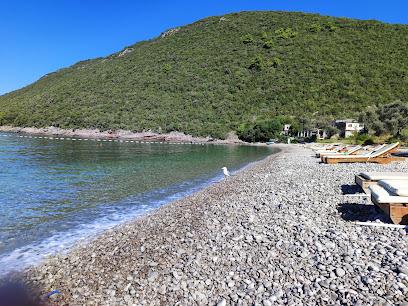
Ploce beach
Experience the pristine beauty of Ploce Beach in Krimovica, Montenegro – a hidden paradise perfect for sunbathing, water sports, and unforgettable sunsets.
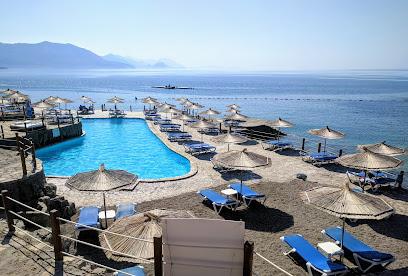
Beach Luchice
Beach Luchice: Experience the ultimate seaside retreat at this picturesque public beach in Petrovac, Montenegro, where nature and relaxation meet.
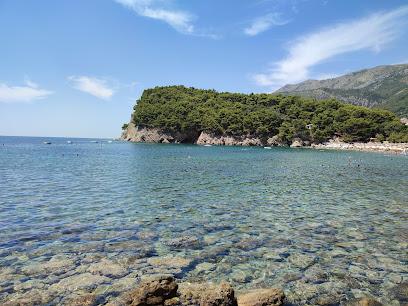
Saint Tryphon's Cathedral
Explore the stunning Saint Tryphon's Cathedral in Kotor, a masterpiece of Romanesque architecture and a symbol of Montenegro's rich cultural heritage.
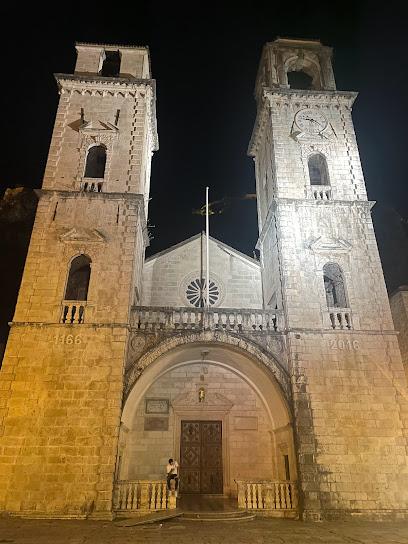
Blue Cave
Explore the Blue Cave's mesmerizing azure waters and breathtaking natural beauty on your journey through Montenegro's stunning coastline.
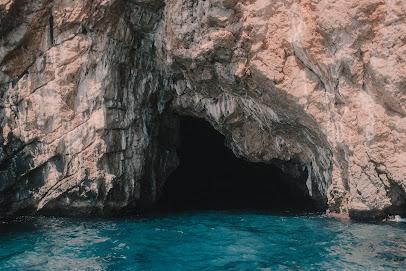
Petrovac beach
Discover the tranquil beauty of Petrovac Beach in Montenegro, where golden sands meet crystal-clear waters amidst rich history and vibrant local culture.
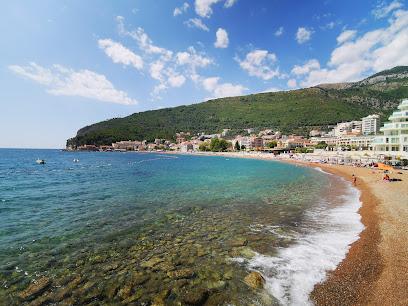
Serpentine
Experience the breathtaking beauty and winding paths of Serpentine, a must-visit scenic route in the heart of Montenegro.
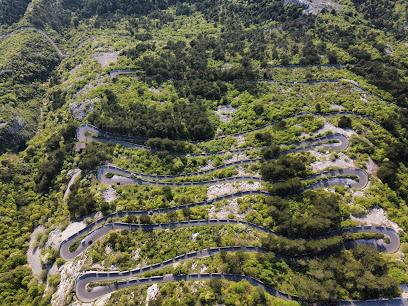
Independence Square
Discover the vibrant essence of Podgorica at Independence Square, a cultural and historical hub surrounded by stunning architecture and lively cafés.
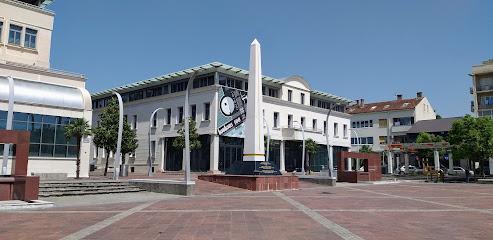
Essential places to dine
BBQ Tanjga
Experience authentic Montenegrin flavors at BBQ Tanjga – a delightful restaurant in Kotor known for its delicious grilled dishes and warm hospitality.
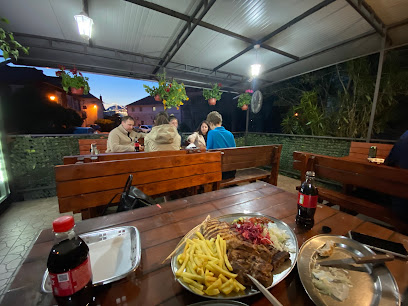
Restobar Taraca
Discover the flavors of Montenegro at Restobar Taraca - a delightful restaurant offering vegan and vegetarian cuisine in a cozy setting.
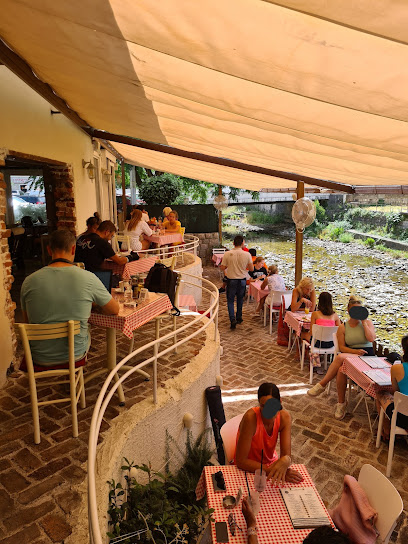
National Restaurant Belveder
Experience traditional Montenegrin cuisine at National Restaurant Belveder in Cetinje - where every dish tells a story.
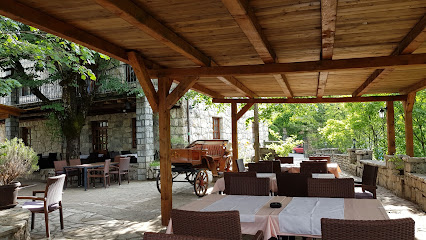
Kole Restaurant
Discover authentic Montenegrin flavors at Kole Restaurant in Cetinje – where delightful cuisine meets warm hospitality.
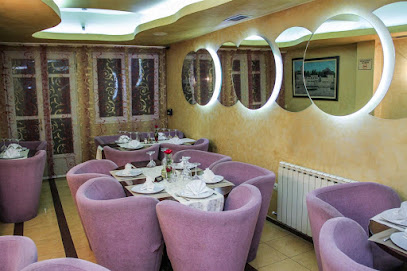
Ladovina Kitchen & Wine Bar
Experience authentic Montenegrin cuisine at Ladovina Kitchen & Wine Bar in Kotor – where tradition meets modern gastronomy.
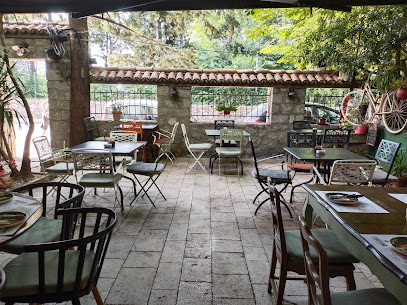
Restaurant PRŽUN
Discover Restaurant PRŽUN: A culinary haven in Kotor offering fresh seafood, barbecue delights, and health-conscious dishes amidst stunning historical scenery.
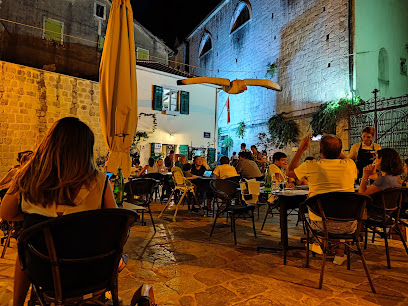
Restaurant Nevjesta Jadrana
Experience authentic Montenegrin cuisine at Restaurant Nevjesta Jadrana in Cetinje - where tradition meets taste in a charming setting.
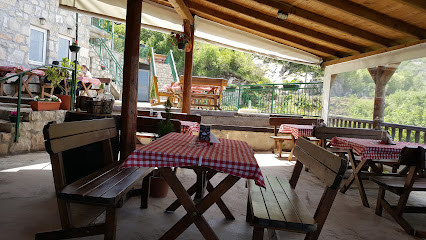
Horizont Bar
Discover delightful cuisine and breathtaking views at Horizont Bar in Cetinje—your perfect dining escape.
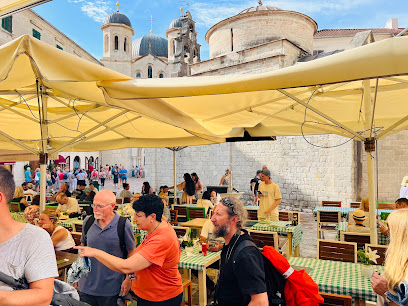
Pescaria Dekaderon
Experience authentic Montenegrin seafood at Pescaria Dekaderon in Kotor - where every dish is crafted with passion and fresh local ingredients.
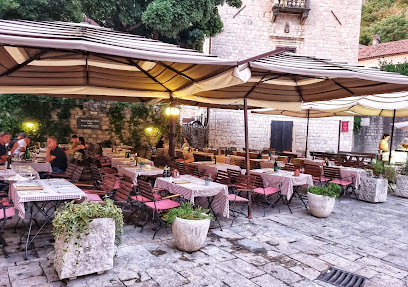
Restaurant Konak
Experience authentic Montenegrin cuisine at Restaurant Konak in Zabrđe – where tradition meets taste amidst stunning scenery.
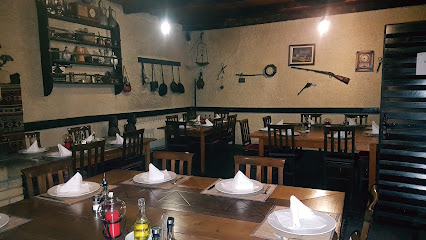
Restoran TavèRna
Experience authentic Montenegrin cuisine at Restoran TavèRna - a must-visit dining destination in Cetinje offering local flavors in a charming setting.

Vladika Restaurant
Experience authentic Montenegrin cuisine at Vladika Restaurant in Lovćen National Park – where every meal is surrounded by stunning nature.

Restaurant Bastadur
Discover authentic Montenegrin cuisine at Restaurant Bastadur in Njegusi - where tradition meets flavor in a cozy setting.
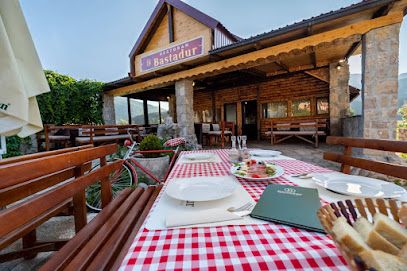
Restoran Zora
Discover the flavors of Montenegro at Restoran Zora - where tradition meets taste in every dish.
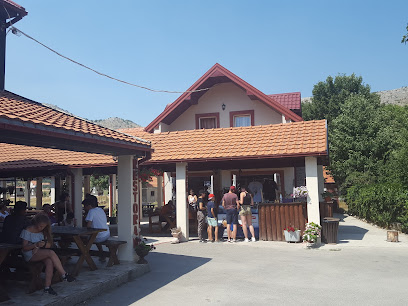
Regina Del Gusto
Experience authentic Mediterranean cuisine at Regina Del Gusto in Kotor - a culinary haven for tourists seeking delicious local flavors.
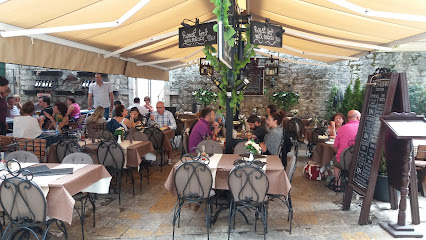
Markets, malls and hidden boutiques
Shopping Centre Kamelija
Explore Shopping Centre Kamelija in Kotor, Montenegro - a modern retail paradise blending local charm with international shopping experiences.
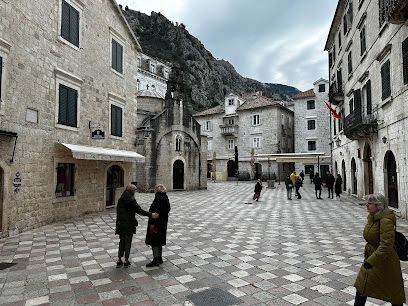
357 Bakery Cetinje
Savor the best of Cetinje with exquisite baked goods and a cozy atmosphere at 357 Bakery, your go-to spot for delicious treats in Montenegro.
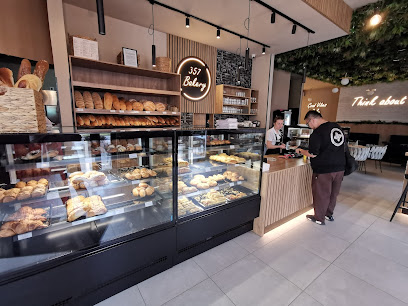
VOLI
Explore a delightful array of local and international foods at Voli Supermarket in Cetinje, a must-visit for culinary enthusiasts.
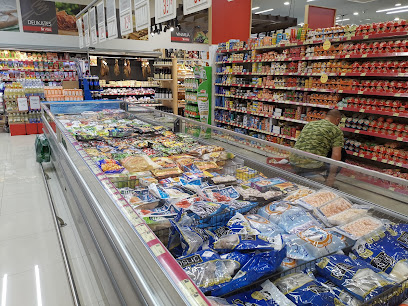
Cats Of Kotor
Explore unique cat-themed souvenirs and handmade crafts at the charming Cats of Kotor in Montenegro's historic old town.
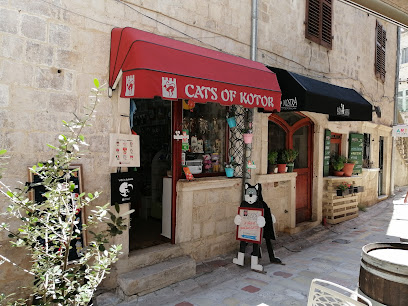
BIOS
Discover cutting-edge gadgets and exceptional service at BIOS, Cetinje's premier electronics store, where technology meets quality.
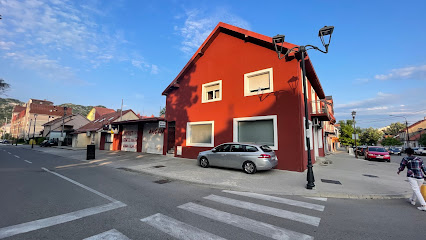
Poslasticarnica Bonita
Experience the sweetest side of Cetinje at Poslasticarnica Bonita, where every pastry is a work of art and every visit is a treat.
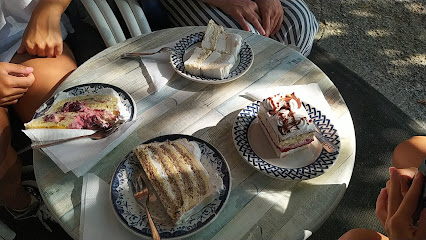
Kamini Sjekloća
Discover the artistry of Montenegrin craftsmanship at Kamini Sjekloća, where each fireplace tells a story of warmth and tradition.
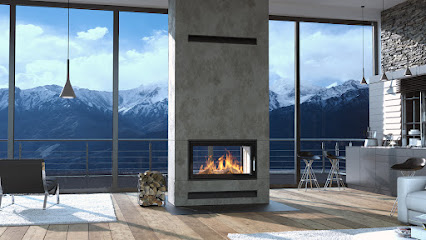
Vegetable Market
Experience the heart of Montenegrin culture at Cetinje's vibrant Vegetable Market, filled with fresh produce and local delicacies.
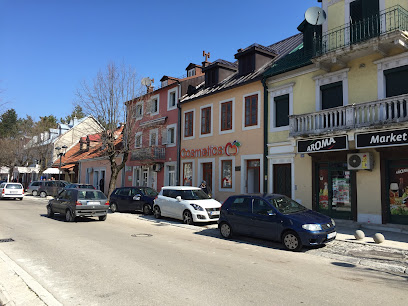
cornelia souvenir
Discover unique Montenegrin crafts and souvenirs at Cornelia Souvenir, the perfect stop in Kotor's enchanting Old Town.
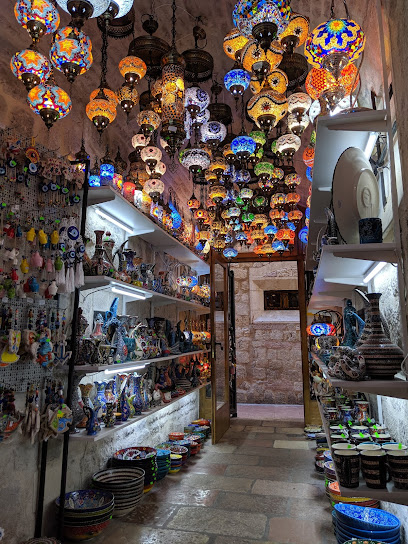
iDEA
Explore the vibrant iDEA Supermarket in Cetinje, a hub for local flavors and international goods in the heart of Montenegro.
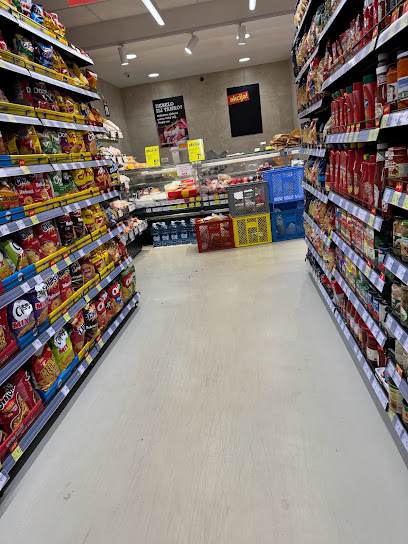
Marcipan Budva
Discover the sweet side of Budva at Marcipan Budva, where exquisite pastries and delightful desserts await every visitor.
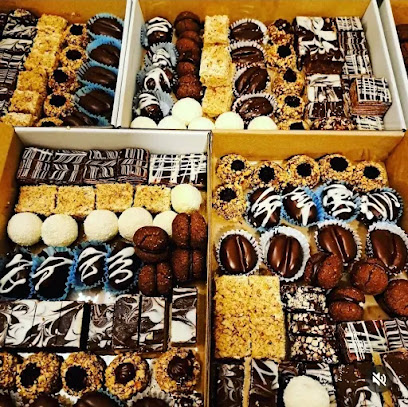
Sungun Souvenir Shop
Explore Sungun Souvenir Shop in Kotor for unique handcrafted treasures and authentic Montenegrin gifts that reflect the region's rich culture.
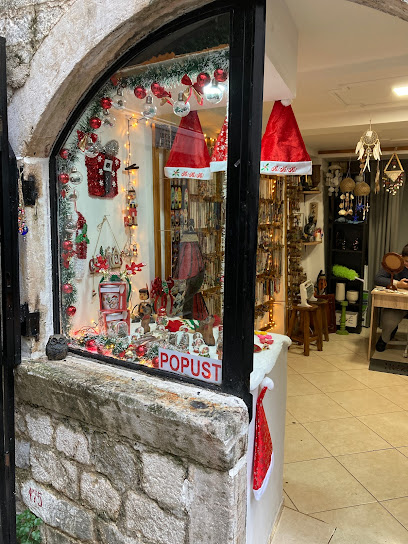
Pejović Guitars
Discover the art of guitar making at Pejović Guitars in Cetinje, where craftsmanship and musical passion intertwine.

Turističko stajalište Panorama
Explore a treasure trove of Montenegrin souvenirs and gifts at Turističko stajalište Panorama, your perfect shopping stop in Špiljari.
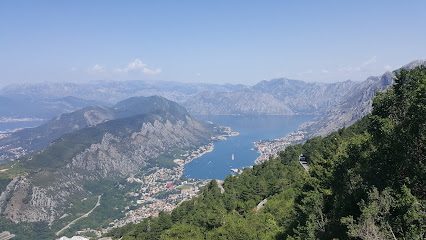
Knjižara Simba Cetinje
Explore the literary treasures of Montenegro at Knjižara Simba Cetinje, where books come alive in a cozy and inviting atmosphere.
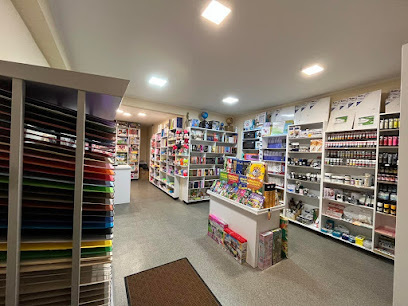
Essential bars & hidden hideouts
Horizont Bar
Discover the charm of Horizont Bar in Cetinje, where stunning views meet a vibrant atmosphere for the perfect getaway.
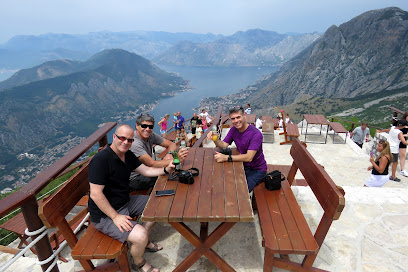
Caffe NYC
Experience the authentic taste of Italy at Caffe NYC in Cetinje, where delicious pizzas and a cozy atmosphere await every visitor.
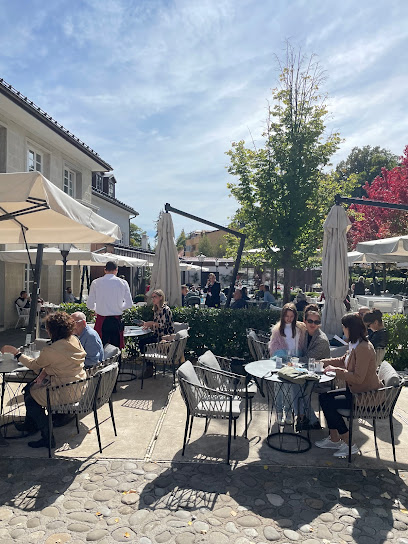
Scottish Pub Academia
Discover the culinary fusion of Montenegro and Scotland at Scottish Pub Academia in Cetinje, where every meal tells a story.
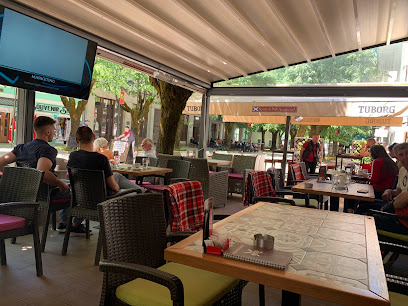
Restobar DVOR
Discover the flavors of Montenegro at Restobar DVOR, where local culinary traditions meet a cozy atmosphere in the heart of Cetinje.
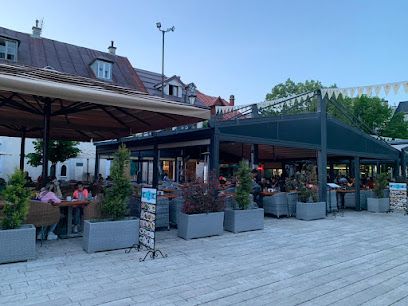
Pizzeria & Restaurant Obelix
Experience the best pizza in Cetinje at Pizzeria & Restaurant Obelix, where quality meets tradition in a cozy atmosphere.
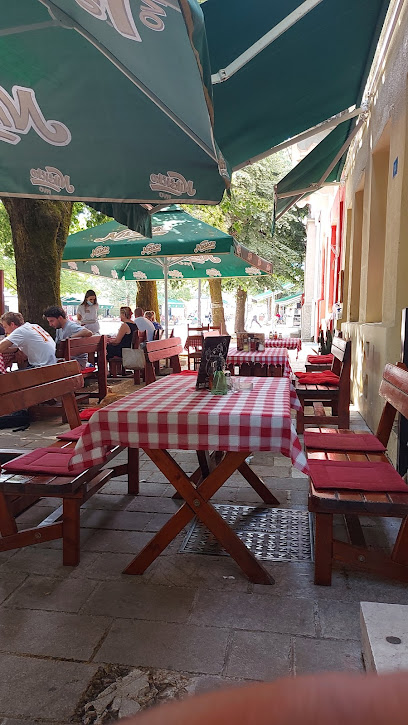
Gaeta
Experience the vibrant nightlife of Cetinje at Gaeta, a charming pub offering local drinks in a welcoming atmosphere.
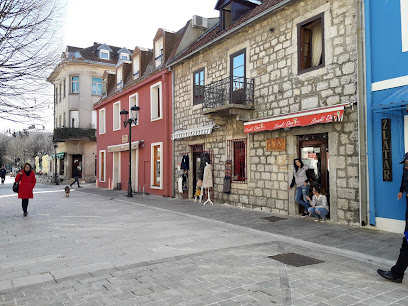
Iris
Discover the warmth of Iris Bar in the heart of Cetinje, where locals and tourists come together to enjoy delightful drinks in a cozy setting.
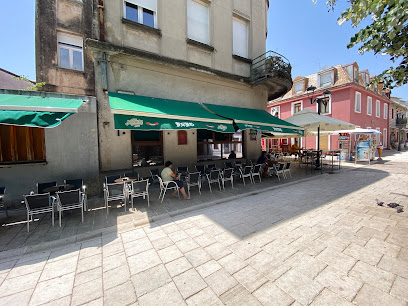
Vinska Kuća
Discover Vinska Kuća in Cetinje, where Montenegrin wines and warm hospitality create an unforgettable experience for every traveler.

BLACK 8
Experience the vibrant nightlife at BLACK 8, a lively bar in Cetinje offering delightful drinks and a warm ambiance.
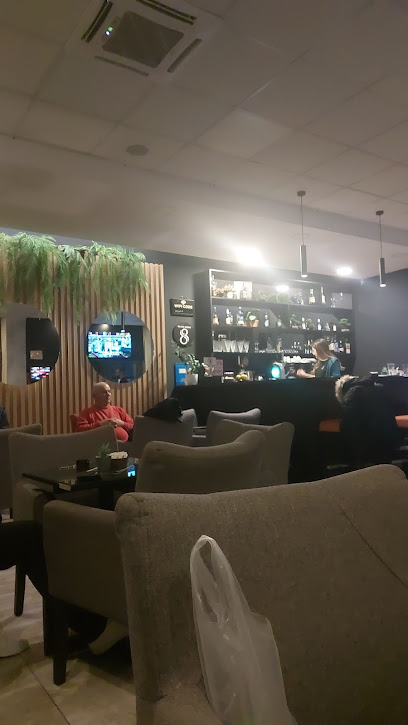
Cafebar #tag (Hashtag)
Discover the cozy Cafebar #tag in Cetinje, Montenegro, where local charm and a relaxed vibe create the perfect atmosphere for unwinding with friends.
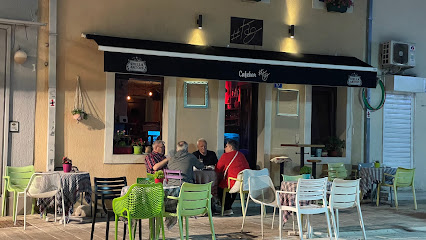
Duga
Experience the vibrant nightlife of Cetinje at Duga, where local charm meets a lively atmosphere and exquisite drinks await.

Sport caffee
Experience the thrill of sports at Sport Cafe in Cetinje, a lively bar perfect for fans and casual visitors alike.
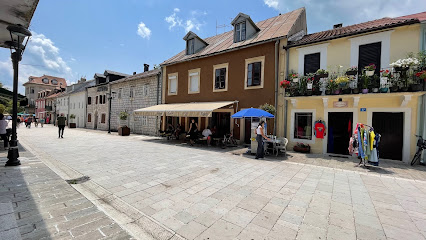
Caffe bar Bulevar
Experience the heart of Cetinje at Caffe Bar Bulevar, where local flavors meet a cozy atmosphere in Montenegro's historic capital.
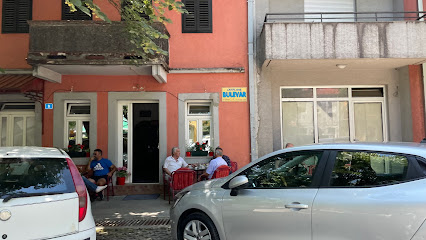
Wolf Drinkwater Cave
Experience the unique charm of Wolf Drinkwater Cave in Cetinje, Montenegro, where nature meets relaxation and local culture comes alive.
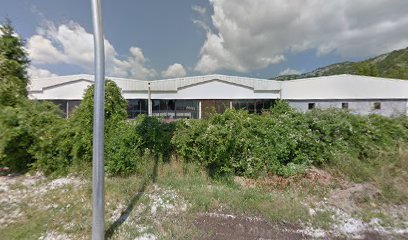
Caffe bar MIM
Discover the cozy charm of Caffe Bar MIM in Cetinje, Montenegro, a perfect retreat for tourists seeking relaxation and delightful beverages.
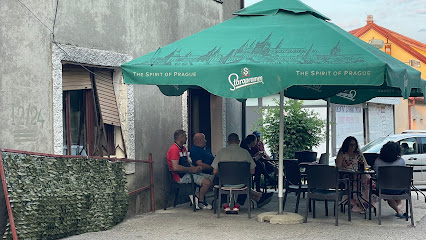
Local Phrases
-
- HelloZdravo
[ZDRAH-voh] - GoodbyeDoviđenja
[doh-VEE-nyah] - YesDa
[dah] - NoNe
[neh] - Please/You're welcomeMolim
[MOH-leem] - Thank youHvala
[HVAAH-lah] - Excuse me/SorryIzvinite
[eez-VEE-nee-teh] - How are you?Kako si?
[KAH-koh see] - Fine. And you?Dobro. A ti?
[DOH-bro. ah tee] - Do you speak English?Da li govorite engleski?
[dah lee goh-VOH-ree-teh ENG-lehs-kee] - I don't understandNe razumijem
[neh rah-ZOO-mee-yem]
- HelloZdravo
-
- I'd like to see the menu, pleaseMolio bih meni, molim
[MOH-lee-oh bee meh-nee, MOH-leem] - I don't eat meatNe jedem meso
[neh YEH-dehm MEH-soh] - Cheers!Živeli!
[ZHEE-veh-lee] - I would like to pay, pleaseHteo bih da platim, molim
[HTEH-oh bee dah PLAH-teem, MOH-leem]
- I'd like to see the menu, pleaseMolio bih meni, molim
-
- Help!Pomoć!
[POH-mohch!] - Go away!Idi odavde!
[EE-dee oh-DAHV-deh!] - Call the Police!Pozovite policiju!
[POH-zoh-vee-teh poh-LEE-tsee-yoo!] - Call a doctor!Pozovite doktora!
[POH-zoh-vee-teh DOHK-toh-rah!] - I'm lostIzgubio/la sam se
[eez-GOO-byoh/lah sahm seh] - I'm illBolestan/sna sam
[boh-LEHS-tahn/snah sahm]
- Help!Pomoć!
-
- I'd like to buy...Hteo bih da kupim...
[HTEH-oh bee dah KOO-peem...] - I'm just lookingSamo gledam
[SAH-moh GLEH-dahm] - How much is it?Koliko košta?
[KOH-lee-koh KOH-shtah?] - That's too expensiveTo je previše skupo
[toh yeh PREH-vee-sheh SKOO-poh] - Can you lower the price?Možete li spustiti cenu?
[MOH-zheh-teh lee SPOO-stee-tee CHEH-noo?]
- I'd like to buy...Hteo bih da kupim...
-
- What time is it?Koliko je sati?
[KOH-lee-koh yeh SAH-tee?] - It's one o'clockJedan je sat
[YEH-dahn yeh saht] - Half past (10)Polovina deset
[poh-LOH-vee-nah DEH-seht] - MorningJutro
[YOO-troh] - AfternoonPopodne
[poh-POHD-neh] - EveningVeče
[VEH-cheh] - YesterdayJuče
[YOO-cheh] - TodayDanas
[DAH-nahs] - TomorrowSutra
[SOO-trah] - 1Jedan
[YEH-dahn] - 2Dva
[dvah] - 3Tri
[tree] - 4Četiri
[CHEH-tee-ree] - 5Pet
[peht] - 6Šest
[shehst] - 7Sedam
[SEH-dahm] - 8Osam
[OH-sahm] - 9Devet
[DEH-veht] - 10Deset
[DEH-seht]
- What time is it?Koliko je sati?
-
- Where's a/the...?Gde je...
[gdeh yeh] - What's the address?Koja je adresa?
[KO-yah yeh ah-DEH-sah] - Can you show me (on the map)?Možete li mi pokazati (na mapi)?
[MOH-zheh-teh lee mee poh-KAH-zah-tee (nah MAH-pee)] - When's the next (bus)?Kada je sledeći (autobus)?
[KAH-dah yeh SLEH-deh-chee (AOW-toh-boos)] - A ticket (to ....)Jednu kartu (do ...)
[YEH-dnoo KAHR-too (doh)]
- Where's a/the...?Gde je...
History of Cetinje
-
Cetinje was founded in 1482 by Ivan Crnojević, the ruler of the Principality of Zeta, as a refuge from the advancing Ottoman Empire. He established the town and moved the seat of his principality to this remote mountainous area, fortifying it against potential invaders.
-
In 1484, Ivan Crnojević founded the Cetinje Monastery, which became the spiritual and cultural heart of Montenegro. The monastery housed the Zeta Metropolitanate and was a center for the preservation of Montenegrin identity and Orthodox Christianity through periods of Ottoman occupation.
-
In 1493, the first South Slavic printing house was established in Cetinje by Đurađ Crnojević, Ivan's son. This printing press produced the 'Oktoih,' the first book printed in Cyrillic in Southeastern Europe, marking a significant cultural milestone in the region.
-
From 1830 to 1851, Cetinje flourished under the rule of Petar II Petrović-Njegoš, a revered poet and philosopher. He modernized the state, reformed the administration, and established diplomatic relations with European powers. His literary works, particularly 'The Mountain Wreath,' remain central to Montenegrin culture.
-
In 1878, Montenegro gained international recognition as an independent state during the Congress of Berlin. Cetinje, as the capital, became a hub of political and cultural activity. The city's architecture from this period reflects its new status, with embassies and grand buildings lining its streets.
-
During World War I, Montenegro sided with the Allies, but in 1916, Cetinje was occupied by Austro-Hungarian forces. The city endured significant hardships during the occupation, and the royal family was forced into exile. The war marked a challenging period for Cetinje and its inhabitants.
-
After World War I, Montenegro was incorporated into the Kingdom of Serbs, Croats, and Slovenes (later Yugoslavia). Cetinje lost its status as the capital but remained a significant cultural and historical center. The city's legacy continued to influence Montenegrin identity within the larger Yugoslav framework.
-
In the late 20th and early 21st centuries, Cetinje experienced a cultural renaissance. The restoration of historic buildings, the establishment of museums, and the promotion of arts and education revitalized the city. Today, Cetinje is a symbol of Montenegrin heritage and resilience, attracting visitors with its rich history and vibrant cultural scene.
Cetinje Essentials
-
Cetinje is located in southwestern Montenegro. The nearest international airport is Tivat Airport, approximately 50 kilometers away. Another option is Podgorica Airport, which is around 45 kilometers from Cetinje. From either airport, you can take a taxi, rent a car, or use public buses to reach Cetinje. There are also regular bus services from major cities like Podgorica, Kotor, and Tivat.
-
Cetinje is a small city, and many of its attractions are within walking distance. For longer trips, local taxis are readily available and relatively inexpensive. Public buses connect Cetinje to nearby cities and towns. Renting a car can also be a convenient option for exploring the surrounding areas at your own pace. Biking is another popular way to get around, with several rental shops available in the city.
-
The official currency in Montenegro is the Euro (EUR). Credit cards are widely accepted in hotels, restaurants, and shops, but it is advisable to carry some cash, especially in smaller establishments and rural areas. ATMs are available throughout Cetinje, so withdrawing cash is convenient and straightforward.
-
Cetinje is generally a safe destination for tourists. However, it is advisable to take standard precautions. Avoid walking alone at night in unfamiliar areas and keep an eye on your belongings in crowded places. There are no specific high-crime areas targeting tourists, but it is always best to stay vigilant and aware of your surroundings.
-
In case of emergency, dial 112 for immediate assistance, which connects you to the police, fire department, and medical services. The local police station and medical facilities are available in Cetinje. It is recommended to have travel insurance that covers medical emergencies. For minor health issues, there are pharmacies in the city where you can purchase over-the-counter medications.
-
Fashion: Do dress modestly, especially when visiting religious sites. Avoid wearing revealing clothing. Religion: Do respect local customs and traditions. Always cover your head when entering religious buildings. Public Transport: Do be respectful and give up your seat to elderly passengers. Don't eat or drink on public transport. Greetings: Do greet people with a handshake or a slight nod. Eating & Drinking: Do try local delicacies and accept food offerings graciously. Don't refuse hospitality, as it is considered impolite.
-
To experience Cetinje like a local, visit the local markets where you can buy fresh produce and traditional Montenegrin goods. Engage with locals, as they are often friendly and willing to share stories about the city's history and culture. Don't miss visiting the Cetinje Monastery and the National Museum of Montenegro. For a unique experience, take a stroll through the Lovćen National Park, which offers breathtaking views and a glimpse into Montenegro's natural beauty.
Trending Landmark in Cetinje
Nearby Cities to Cetinje
-
Things To Do in Kotor
-
Things To Do in Budva
-
Things To Do in Tivat
-
Things To Do in Perast
-
Things To Do in Podgorica
-
Things To Do in Herceg Novi
-
Things To Do in Bar
-
Things To Do in Nikšić
-
Things To Do in Ulcinj
-
Things To Do in Trebinje
-
Things To Do in Dubrovnik
-
Things To Do in Lezhë
-
Things To Do in Bajram Curri
-
Things To Do in Peja
-
Things To Do in Krujë













